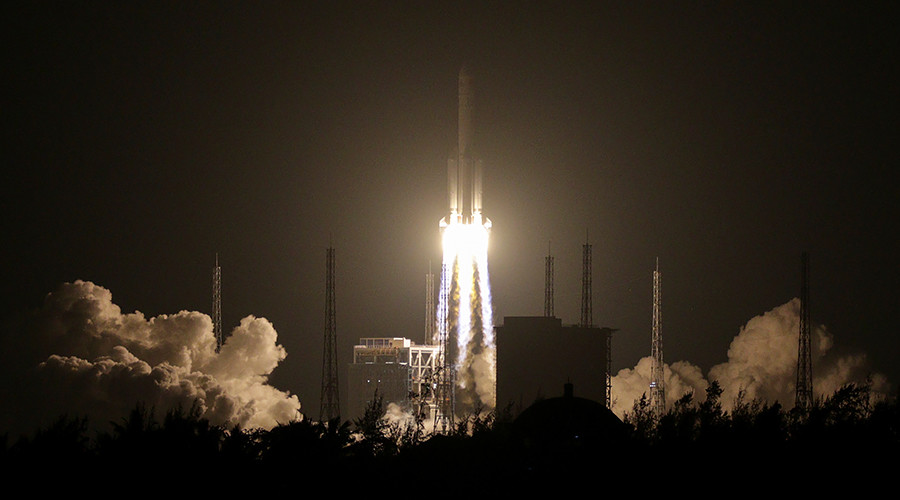China’s biggest rocket launch failed
July 3, 2017 | Expert Insights

On 2 June 2017, the second launch of China's new-generation Long March-5 carrier rocket failed dealing a blow to the country's ambitious space aspirations. Carrying an experimental communications satellite, China's largest rocket lifted off from the seaside Wenchang space launch center on the southern Chinese island of Hainan.
But 40 minutes later, the state-run Xinhua news agency flashed a headline declaring the launch a failure -- without providing any details. The agency tweeted later saying, Anomaly was detected during its flight and further investigation will be carried out.
LM-5/ CZ-5
Long March 5 (LM-5) is a Chinese heavy lift launch system developed by China Academy of Launch Vehicle Technology (CALT). CZ-5 is the first Chinese vehicle with new design focusing on liquid rocket propellants from the ground up. Currently, two CZ-5 vehicle configurations are planned for different missions, with a maximum payload capacity of 25,000 kilograms (55,000 lb) to LEO and 14,000 kilograms (31,000 lb) to GTO. The Long March 5 roughly matches the capabilities of American EELV heavy-class vehicles such as the Delta IV Heavy. Its payload capacity currently makes it the second most powerful rocket in the world after the Delta IV Heavy.
CZ-5 was carrying its heaviest satellite and was the same type of rocket expected to lead the country's trip to the moon later this year. China is also aiming to land on Mars by 2020, and become the first country to soft-land on the far side of the moon by 2018.
Analysis
China was late to the space race -- it didn't send its first satellite into space until 1970, just after the United States put the first man on the moon. But in the decades since, China has pumped billions of dollars into research and training.
The launch failure means further delay for a series of planned Chinese space endeavors -- including its robotic and eventual human lunar programs. If the rocket was successfully launched, it would have given China "heavy lift capabilities" needed to develop a large space station as well as new capabilities to reach interplanetary destinations.
On the other hand, it’s neighbour, India has been successful in launching rockets & satellites successfully. On June 5, 2017, the country successfully launched its most powerful and heaviest geostationary rocket carrying advanced communication satellite GSAT-19 from the spaceport in Sriharikota.
Indian Space Research Organisation (ISRO) on 16 February 2017 set a new precedent. It had successfully launched the PSLV-37 rocket which put in to orbit a record 104 satellites from seven countries.
After the successful launch of PSLV-37, Chinese media criticised India saying, “India’s space technology still lags behind the US’ and China’s. The country should remember it had the largest number of poor people in the world and a weak foundation for all-round national development. India didn’t have rockets powerful enough to support large-scale space exploration. There is no Indian astronaut in space and the country’s plan to establish a space station has not started.”
India’s technological ability to explore the solar system had certainly caught America’s eye. The Mangalyaan mission was successful & was a technological leap that had propelled India ahead of space rivals China and Japan in the field of interplanetary exploration.
Assessment
Our assessment is that, the two successive failures in China’s satellite launch program is a definite set back to its planned lunar expedition. Given the technological strengths, we believe that the set back is temporary & they will soon launch another successful satellite. In 2007, the country had demonstrated to the world its capability to engage in anti-satellite space war.








Comments